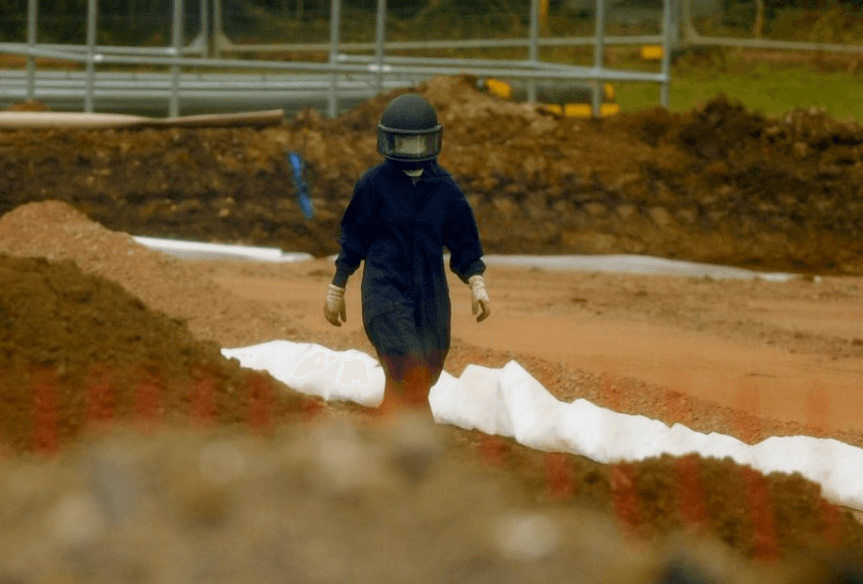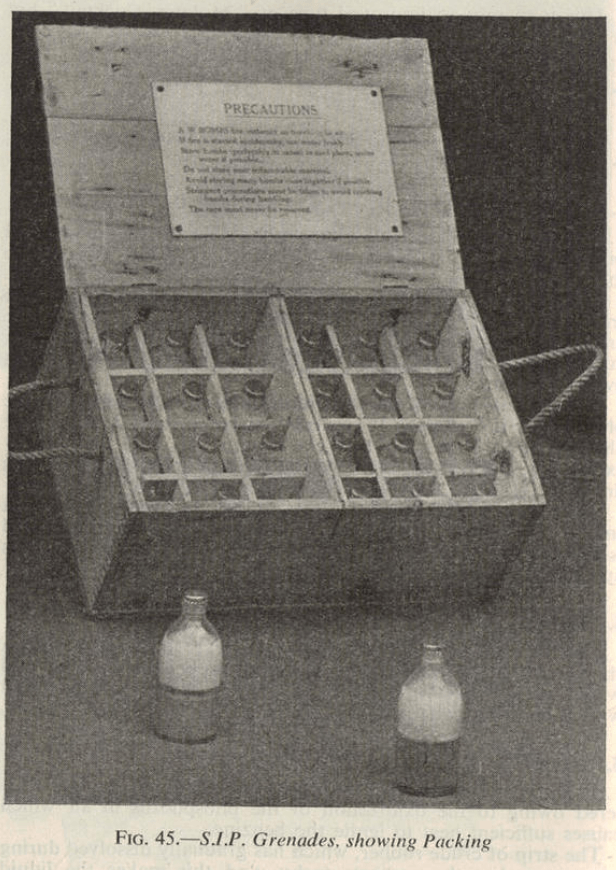194 unexploded WWII grenades delay Cambridge construction project for weeks
Numerous unexploded World War 2 grenades have been unearthed at the site of the new Cambridge ice arena.
40 grenades were originally found, however by the end of the project a further 154 had been recovered, some of which were still packed inside their wooden crates. A warning notice on one uncovered crate containing 24 “A. W. bombs” said they were “fragile”, “highly flammable” and should be handled with “great care”.
The delay to this project suggests an unexploded ordnance risk management plan was not in place prior to site works commencing.
Had a Brimstone EOD engineer supervised these excavations, a coordinated response plan would have been put into immediate effect. Proper planning and consultation such as this would have mitigated the UXO finds’ impact on the project.

Self Igniting Phosphorus Grenades
The Self Igniting Phosphorus (SIP) grenade was officially categorised as the British Army’s No.76 special incendiary grenade. It comprised of white phosphorus, benzine, water, and a strip of rubber. The ingredients were contained in a half-pint glass bottle and sealed with a crown stopper, like a beer bottle.
By autumn of 1941 some six million SIP grenades had been produced in Britain. These rudimentary weapons, mass produced quickly and cheaply, were used almost exclusively by the Home Guard, for defence against the anticipated German invasion.
They were to be hand thrown at the enemy or projected, using a simple mortar system. On impact, the bottle would smash, the ingredients would oxidise, and an aggressive incendiary reaction would occur.
Post-war No.76 grenade finds are relatively commonplace when compared to other types of British Land Service Ammunition. One reason is that such a large quantity were manufactured, however none were used in combat. You can learn more about UXO contamination in the UK on our blog here.

Avoid costly delays to your project
Unexploded ordnance continues to pose a significant challenge to construction and development projects across the UK and overseas. If you have a new or upcoming construction project and you want to get your site accessed for UXO risk, contact our dedicated commercial team.
You can keep up to date with Brimstone by following us on Facebook, Instagram, Twitter, LinkedIn and YouTube.